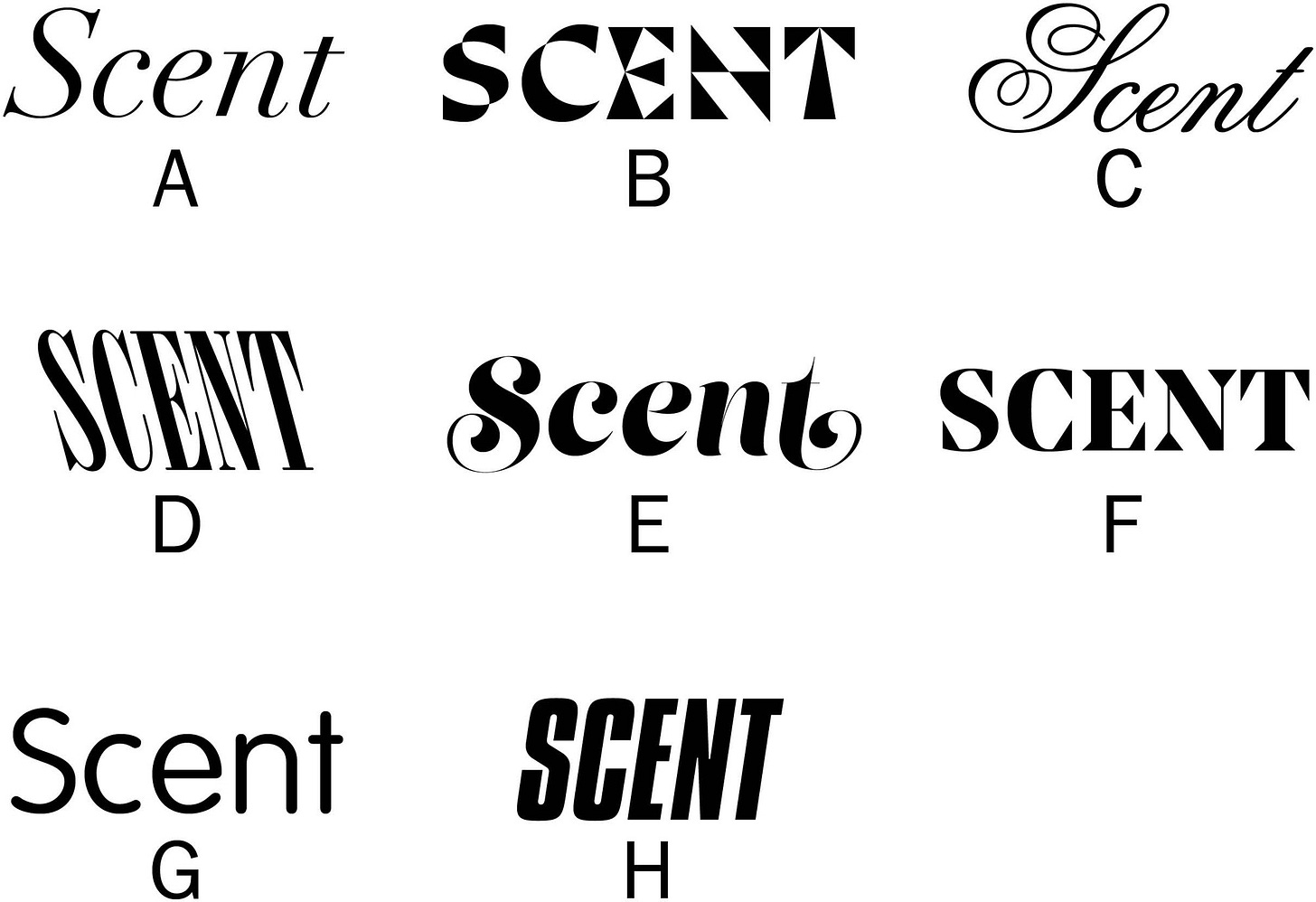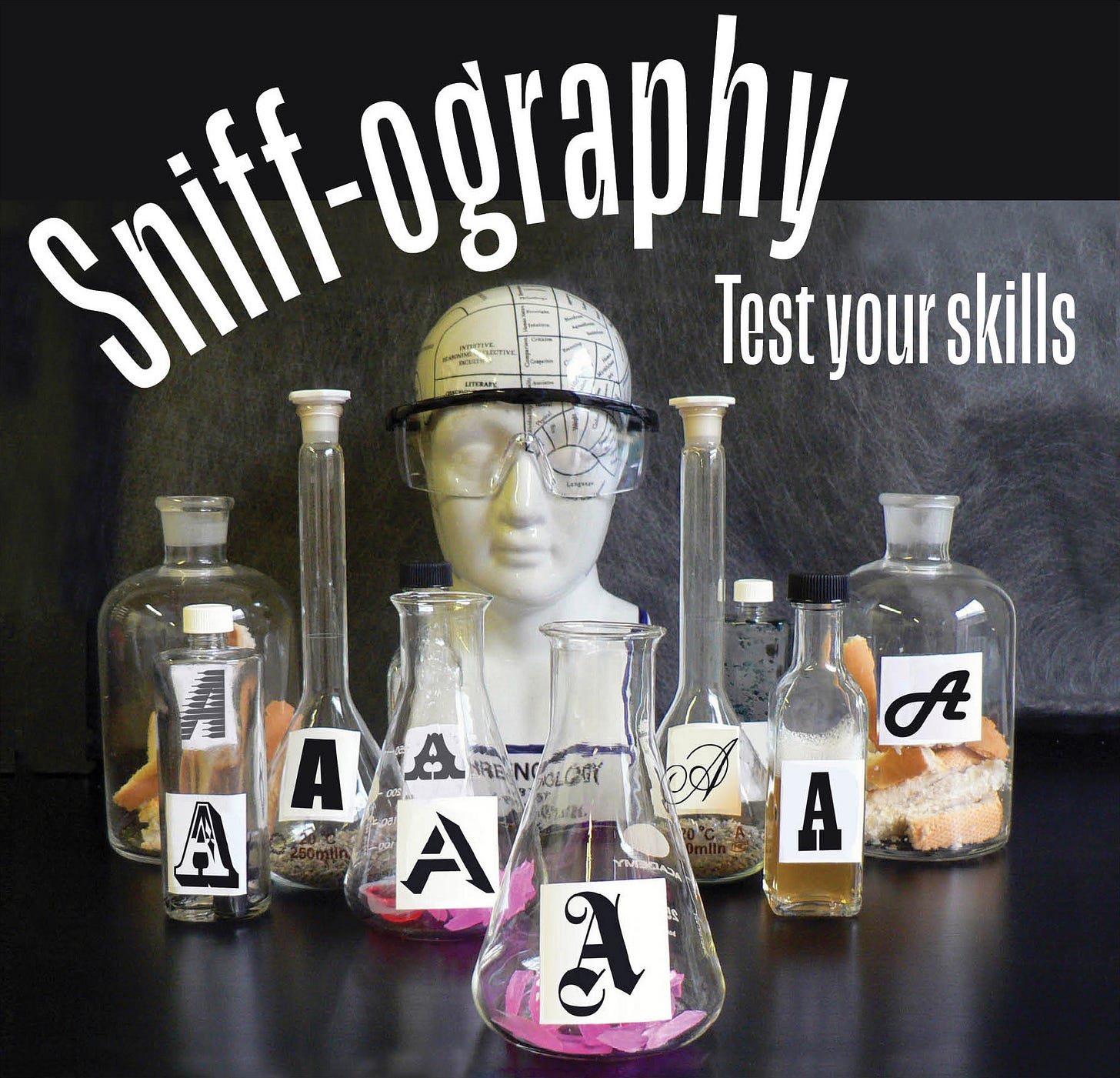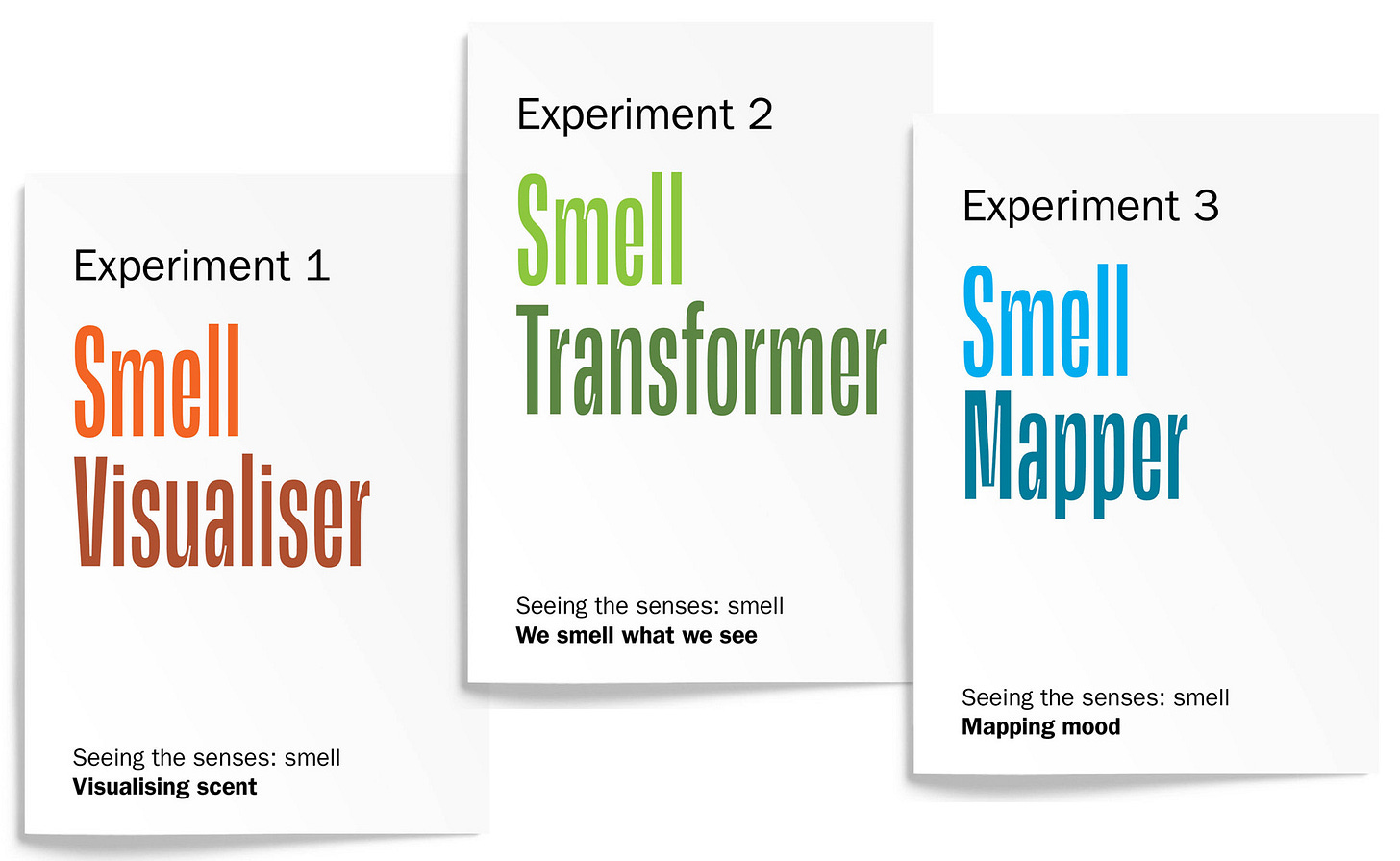Hello I’m Sarah Hyndman, a designer/researcher, author and speaker. I’m the founder of Type Tasting and curator of The Sensologists.
Which scent would you rate as smelling the most:
Floral:
Woody:
Sweet:
Citrus:
Take the quick Buzzfeed quiz here. Or reply to this email with your answers 1: __ 2: __ 3: __ 4: __ (Each answer can apply to more than one.)
This is the first stage of an experiment that I’m planning to run at in-person events. I’ll be doing the second stage at our Open Studios day on Sunday 1st December. Details below.
Test your sniff-ography skills…
🧠 From scent-ences to smell-abets, uncover how your brain pairs letters and smells to shape what you think, feel and do. Discover how typography speak to your unconscious—and that it can also reveal its secrets.
👃🏻 If you’re in the N16 area of London on Sunday 1st December come along and take part in smell experiments. These will take place in the Type Tasting studio G8. Many of the Chocolate Factory artists will be opening their studio doors so come along for a family day out.
Open Studios at Chocolate Factory N16
Sunday 1st December
11am to 6pm
Farleigh Place (off Farleigh Road)
London N16 7SX
Free entry, drop-in
The Sensologists
Next week’s The Sensologists briefing will include multimodal enrichment, when do people trust AI?, smell of a new world, new discovery of an even older alphabet, why we’re wired to love simple solutions, scientists on why curiosity helps people and robots to learn faster, and more. Subscribe here.
Do we smell what we see?
Human perception is weird. It’s influenced by lots of irrational-seeming factors. Each one of us experiences the world in our own way—and it frequently starts with sight.
We screen the world around us according to what we see. We decide what we’ll pay attention to. We make decisions about what to buy. By the time we engage with a product, we’ve already projected an imagined experience onto it. These assumptions sometimes influence what we experience.
Most of us find it difficult to describe smells because there are very few dedicated smell words. However, we can often pair them with visual elements—cue my experiments towards creating a visual olfactory lexicon.
Smell is fascinating because its directly connected to the emotional processing area of the brain. It’s a shortcut to memories, pleasure and belonging. We often judge a bottle of scent at first sight—can this influence what we smell?
Experiments and results
I’ve been running smell perception experiments since 2013. I’m looking for funding to develop and publish these. The experiments fall into three topics with working titles ‘Smell Visualiser’, ‘Smell Transformer’ and ‘Smell Mapper’. I’ll keep you posted.
Smells like?
If you’ve been to one of my talks or events you’ll likely have taken part in sight/smell demonstrations. These range from sniffing mystery jars to a mood prediction game accompanied by a smell that I blast into the audience with a vortex cannon.
What problems can I help you solve?
I help your team uncover the profound influence of sight on behaviour and why its vital to connect it with all the senses. Explore how perception and multi-sensory elements shape emotions and drive actions. By fostering an experimentation mindset, your team will create memorable brand experiences that captivate both the eye and the emotions.
👉🏻 Activity Lab masterclasses engage participants with hands-on experiments.
👉🏻 Keynote talks encourage audience-participation with live demonstrations.
👉🏻 Bespoke events immerse audiences in your brand’s story using all the senses.
👉🏻 Research lab gathers data as participants uncover their own responses.
Immersive learning experiences explore the intersection of perception, senses and human behaviour. They are scientifically grounded—based on over a decade of mass participation typography experiments.
✉ Get in touch if you’d like to chat.







